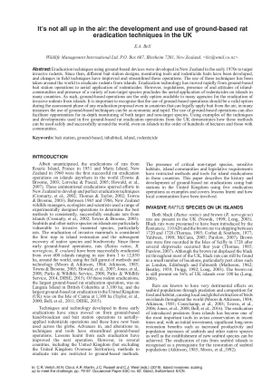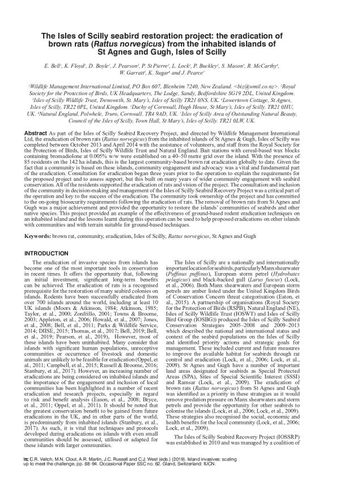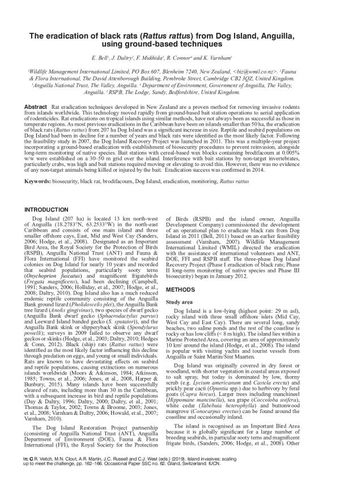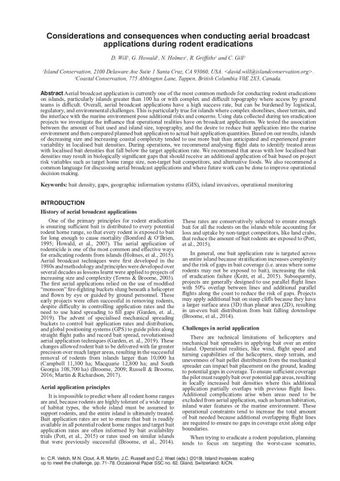It's not all up in the air: the development and use of ground-based rat eradication techniques in the UK
- Description:
- Eradication techniques using ground-based devices were developed in New Zealand in the early 1970s to target invasive rodents. Since then, different bait station designs, monitoring tools and rodenticide baits have been developed, and changes in field techniques have improved and streamlined these operations. The use of these techniques has been taken around the world to eradicate rodents from islands. Eradication technology has moved rapidly from ground-based bait station operations to aerial application of rodenticides. However, regulations, presence of and attitudes of island-communities and presence of a variety of non-target species precludes the aerial application of rodenticides on islands in many countries. As such, ground-based operations are the only option available to many agencies for the eradication of invasive rodents from islands. It is important to recognise that the use of ground-based operations should be a valid option during the assessment phase of any eradication proposal even in countries that can legally apply bait from the air; in many instances the use of ground-based techniques can be as economic and rapid. The use of ground-based operations can also facilitate opportunities for in-depth monitoring of both target and non-target species. Using examples of the techniques and developments used in five ground-based rat eradication operations from the UK demonstrates how these methods can be used safely and successfully around the world, even on islands in the order of hundreds of hectares and those with communities.
- Display date:
- 2019
- Location:
- Worldwide
- Collections:
- Secretariat of the Pacific Regional Environment Programme (SPREP)
- Publisher:
- International Union for Nature Conservation (IUCN)
- Content partner:
- Secretariat of the Pacific Regional Environment Programme (SPREP)
- Availability:
- Not specified
-
Copyright status: All rights reservedFind out more about what you are able to do with this itemThis item is all rights reserved, with means you'll have to get permission from Secretariat of the Pacific Regional Environment Programme (SPREP) before using it. For more information, please see our use and reuse page.What can I do with this item?Non-infringing useNZ copyright law does not prevent every use of a copyright work, and this item may be hosted by an international institute or organisation. You should consider what you can and cannot do with a copyright work.No sharingYou may not copy and/or share this item with others without further permission. This includes posting it on your blog, using it in a presentation, or any other public use.No modifyingYou are not allowed to adapt or remix this item into any other works.No commercial useYou may not use this item commercially.
Related items
Welcome and warm Pasifik greetings
The information on this site has been gathered from our content partners.
The names, terms, and labels that we present on the site may contain images or voices of deceased persons and may also reflect the bias, norms, and perspective of the period of time in which they were created. We accept that these may not be appropriate today.
If you have any concerns or questions about an item, please contact us.



